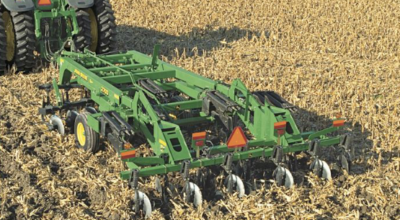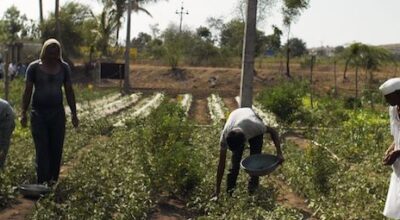Deciding which type of irrigation system is best for their crop is one of the most important decisions a grower has to make. For this reason, growers often have a great deal of questions and concerns when it comes to converting their system to subsurface drip irrigation (SDI).
In an effort to help growers on their road to success, we’ve put together a complete guide to converting to drip. We will answer some of the most common questions and concerns that growers have about John Deere’s subsurface drip irrigation features, application, system types, maintenance and more.

Why use Subsurface Drip Irrigation?
First off, John Deere’s subsurface drip irrigation helps achieve more efficient water use by saving water with less evaporation and deep percolation. It decreases groundwater contamination and leakage of nutrients carried by over irrigation and lack of consistency. Subsurface drip irrigation also offers more effective management tools to deliver water and nutrients straight to the plant roots at the very instant and exact quantity needed.
SDI works to maximize irrigated acres by irrigating every corner of fields and adapting to small and unusually shaped areas. By carrying the irrigation water and applying it directly to the plant roots, plant nutrition will improve. This irrigation produces drier soil surface and reduces weed germination, while allowing the use of recycled water without negative environmental effects.
It’s also important to note that SDI is in compliance with environmental and public health regulations, prohibiting overhead irrigation of certain crops with recycled water. Typical applications include alfalfa, asparagus, cotton, corn, orchards, soybeans, sugar beets, tomatoes, vegetables and vineyards.

What system types are available?
There are two types of subsurface drip irrigation: short-term and long-term. Short-term SDI systems have a shorter life expectancy (3-10 years) and are normally used for mid-valued crops. Drip tubing is usually installed between 3 inches and 10 inches of the surface and is designed to bring peak ET demands of crop.
On the other hand, long term SDI has a life expectancy of more than 20 years and is typically used for commodity crops. Drip tubing is usually installed between 12 inches and 18 inches of the surface and uses soil holding capacity and irrigation timing to deliver peak crop demand.
There are several factors to consider when deciding whether to use short-term or long-term subsurface drip irrigations. These include the type of soil, depth of crop rooting, seed vigor, water salinity, crop rotation, tillage practices, and water efficiencies.

What maintenance is required?
To preserve the life of their system, there are certain maintenance necessities that a grower should consider. System pressure and flow rate should be watched to ensure that it is operating in accordance to the required pressures and achieving peak performance. Monitoring filtration performance is also essential. These requirements vary with factors like water quality and dripped specifications.
There are also chemical treatments that can preserve the life of this system. For example, acid injection can reduce precipitation caused by chemical contaminants and acid wash can reduce the build up of contaminants in the drip lines. Chlorine injection can also be used to restrict biological and organic contaminant growth like algae and bacteria. It’s also important for growers to know that there will be pest management involved in properly caring for the system. Regular pest management will ensure that it is fully functioning throughout the entire seasons.
What should be considered before choosing a subsurface drip irrigation system?
You will want to consider the following before choosing which subsurface drip irrigation system is best for your everyday operations:
- Field layout, shape and size
- Field conditions (soil type, depth of topsoil, subsoil type, slope and topography)
- Water (availability, quantity, and quality which can be determined with a water quality test)
- Crops (type, requirements and rotation)
- Cultural practices (seed germination, tillage practices and harvesting)
- Drip line products (diameter, wall thickness, emitter spacing, flow rate and filtration)
- Location of drip lines (depth, distance between laterals and relation to the crop)
- System components and location (pumps, filters, controls, control valves, lines, air valves and drip lines)
- Monitoring (system flow rates and pressures should be monitored to ensure peak performance and maximize system life)
- Maintenance procedures (routine maintenance is necessary for system longevity and optimal performance)
These are all considerations that your John Deere equipment dealer would be more than happy to help you with.
We hope that this answered any and all of the question you have been wondering about John Deere’s subsurface drip irrigation system. If you enjoyed this post or want to read others, feel free to connect with us on Facebook!


